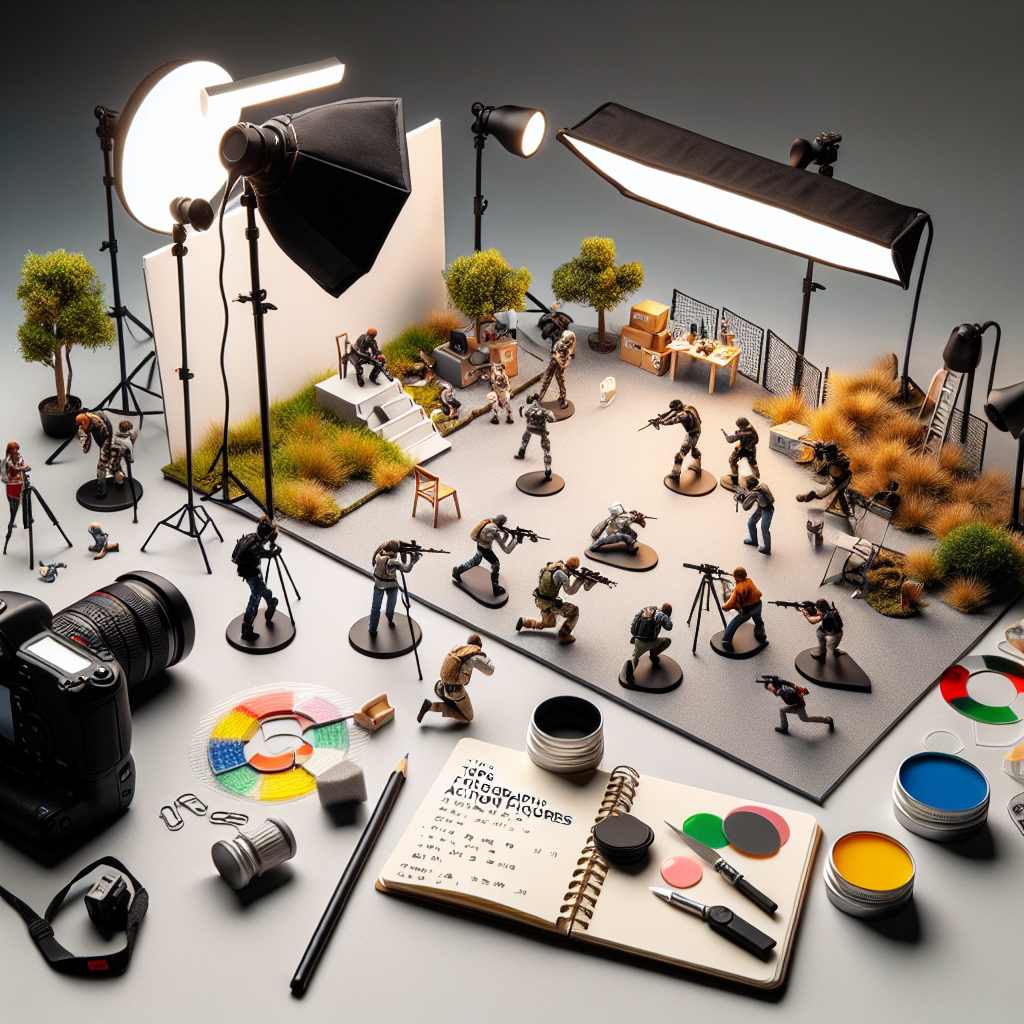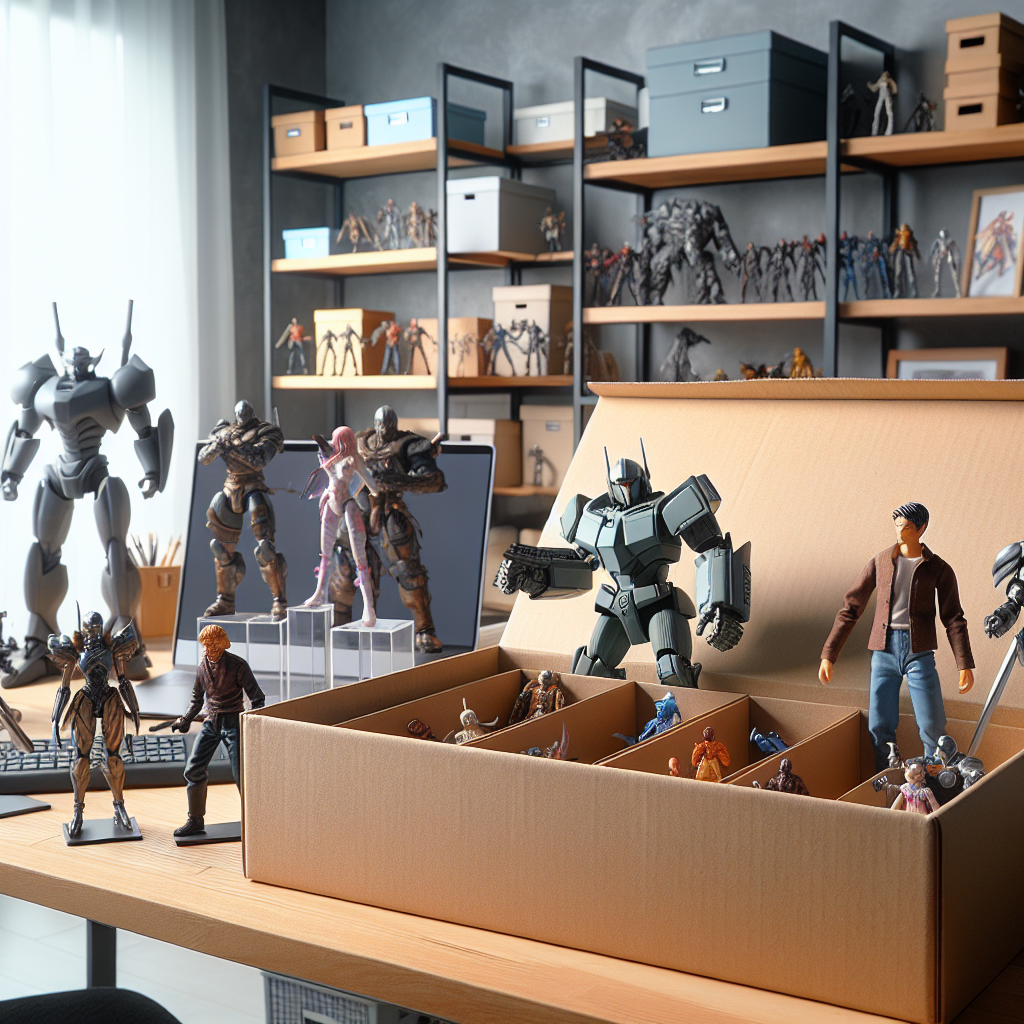Tips for Photographing Action Figures: Create Dynamic and Professional-Looking Images
Action figure photography is an exciting and rewarding hobby that allows you to blend creativity with technical skills. Whether you’re shooting for social media, a personal collection, or professional work, understanding photography, lighting, dioramas, and composition is crucial for creating dynamic images. In this blog, we’ll explore essential tips and techniques that can elevate your action figure photography game.
1. Understanding Photography Basics
Before we dive into the specifics of photographing action figures, it’s important to grasp some basic photography concepts:
- Aperture: A wider aperture (lower f-stop number) can create a shallow depth of field, which isolates your action figure from the background. This technique adds a professional touch to your images.
- Shutter Speed: For action shots, a faster shutter speed (1/250 or faster) will help freeze motion. However, if you’re capturing static poses, you can use a slower shutter speed.
- ISO: Keep your ISO low (100-400) to avoid noise in your images. If shooting in low light, increase your ISO cautiously, but be mindful of introducing grain.
2. Mastering Lighting
Lighting is arguably the most critical aspect in photography, particularly when it comes to creating dynamic images of action figures. Here are some tips for effective lighting:
- Natural Light: Position your action figures near a window to take advantage of natural light. Mornings and late afternoons usually provide the best soft lighting.
- Artificial Light: Use softboxes or LED panels to create even lighting. Avoid direct flash as it can cause harsh shadows and reflections.
- Backlighting: Experiment with backlighting to create dramatic silhouettes. Place a light source behind the figure to enhance outlines and add depth.
3. Building Compelling Dioramas
Dioramas are a fantastic way to create context and narrate a story through your images. Here’s how to make your dioramas stand out:
- Choose a Theme: Decide on a theme that complements your action figure. Whether it’s a battlefield, cityscape, or fantasy realm, a strong theme can significantly enhance the storytelling element of your photos.
- Materials: Use foam, cardboard, or even natural materials like rocks and plants to construct your diorama. Don’t shy away from paint, as it can bring your background to life.
- Scale and Proportion: Ensure that the elements you choose for your diorama are proportionate to your action figures. This will make the scene appear more realistic and immersive.
4. Composition Techniques
Once your lighting and diorama are set up, it’s time to focus on composition. Effective composition can guide the viewer’s eye and add interest to your photos:
- Rule of Thirds: Divide your frame into a 3×3 grid and position your subject along the intersecting lines or at the vertices. This creates balance and draws attention to the action figure.
- Leading Lines: Use natural lines within your diorama to guide the viewer’s eye to the main subject. This can be pathways, edges of buildings, or even the direction of action.
- Dynamic Angles: Don’t be afraid to shoot from unconventional angles—low angles can make your figures appear more heroic, while high angles can create a sense of vulnerability.
5. Post-Processing Techniques
After capturing your images, post-processing can elevate your work even further. Here are some popular techniques to consider:
- Color Correction: Adjust the overall color balance to enhance the vibrancy of your action figures and backgrounds. Tools like Adobe Lightroom can assist with this.
- Cropping: Crop out distractions and focus on the main subject. Think about the rule of thirds as you make adjustments.
- Sharpening and Noise Reduction: Use sharpening tools to enhance details, and apply noise reduction filters if your images are grainy from high ISO settings.
6. Practice and Experimentation
The best way to improve is through practice. Don’t hesitate to try different setups, lighting conditions, and compositions. Photography is an art, and your unique vision will shine through the more you explore. Join communities online to share your work, seek feedback, and learn from fellow enthusiasts.
Conclusion
Photographing action figures offers a unique avenue for creativity and storytelling. By mastering photography basics, utilizing proper lighting, building compelling dioramas, applying strong composition techniques, and engaging in post-processing, you can create dynamic, professional-looking images that truly capture the essence of your subjects. So grab your camera, set up your action figures, and start shooting!




